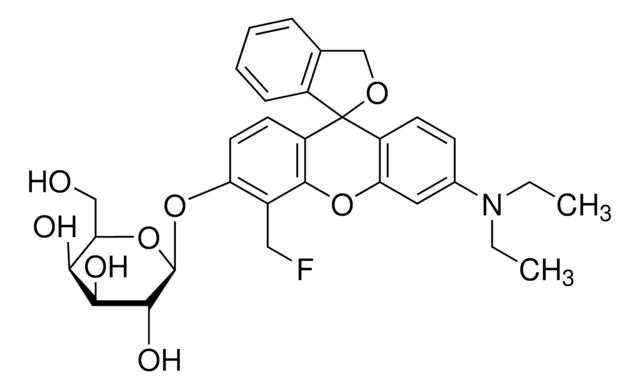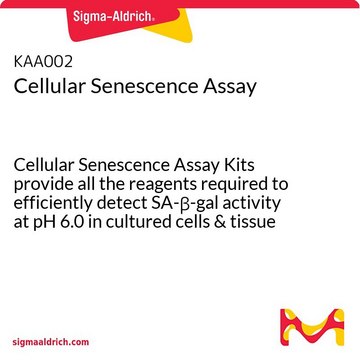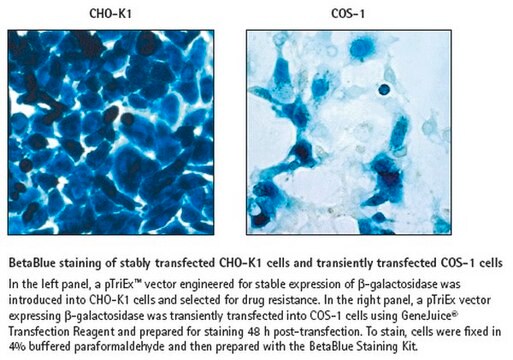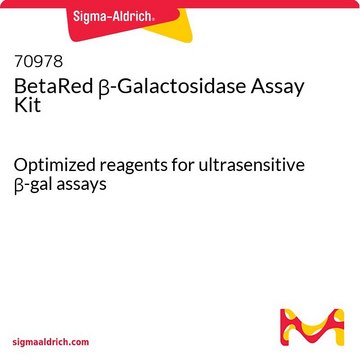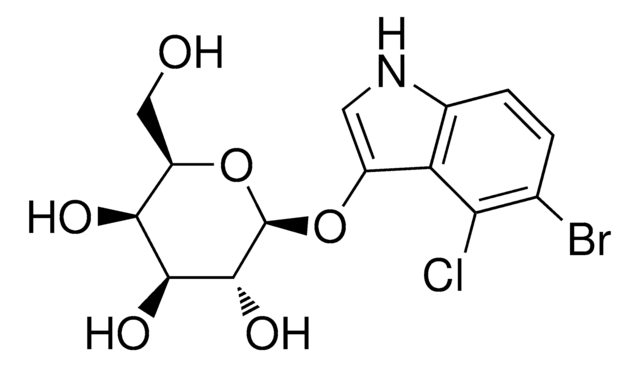CS0030
Senescence Cells Histochemical Staining Kit
sufficient for 100 tests
Sinónimos:
Senescent cells IHC kit, cellular β-galactosidase probe
About This Item
Productos recomendados
uso
sufficient for 100 tests
Nivel de calidad
envase
pkg of 1 kit
condiciones de almacenamiento
dry at room temperature
método de detección
colorimetric
Condiciones de envío
dry ice
temp. de almacenamiento
−20°C
Descripción general
Aplicación
- senescence-associated β-galactosidase assay
- to test for senescence in human pancreatic cancer cells
- adipose-derived stem cells (ADSCs)
- cord blood mesenchymal stromal/stem cells (CBMSC)
Acciones bioquímicas o fisiológicas
Información legal
Solo componentes del kit
- X-gal solution 4 mL
- Staining Solution, 10X 15 mL
- Fixation Buffer 10x 15 mL
- Reagent B 1.5 mL
- Reagent C 1.5 mL
- Dulbecco's Phosphate Buffered Saline (PBS) 10x 60 mL
Producto relacionado
Palabra de señalización
Danger
Frases de peligro
Clasificaciones de peligro
Acute Tox. 3 Inhalation - Acute Tox. 4 Dermal - Acute Tox. 4 Oral - Aquatic Chronic 3 - Carc. 1B - Eye Dam. 1 - Muta. 2 - Resp. Sens. 1 - Skin Corr. 1B - Skin Sens. 1 - STOT SE 3
Órganos de actuación
Respiratory system
Riesgos supl.
Código de clase de almacenamiento
6.1C - Combustible acute toxic Cat.3 / toxic compounds or compounds which causing chronic effects
Certificados de análisis (COA)
Busque Certificados de análisis (COA) introduciendo el número de lote del producto. Los números de lote se encuentran en la etiqueta del producto después de las palabras «Lot» o «Batch»
¿Ya tiene este producto?
Encuentre la documentación para los productos que ha comprado recientemente en la Biblioteca de documentos.
Los clientes también vieron
Artículos
Cell based assays for cell proliferation (BrdU, MTT, WST1), cell viability and cytotoxicity experiments for applications in cancer, neuroscience and stem cell research.
Nuestro equipo de científicos tiene experiencia en todas las áreas de investigación: Ciencias de la vida, Ciencia de los materiales, Síntesis química, Cromatografía, Analítica y muchas otras.
Póngase en contacto con el Servicio técnico